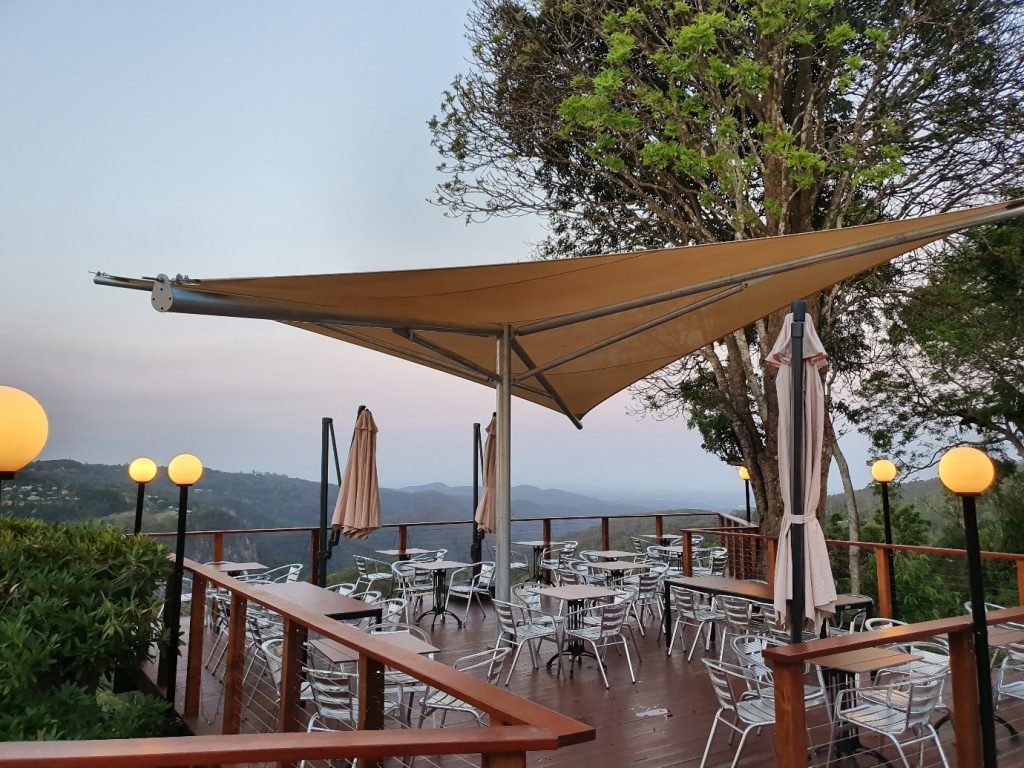YOU ARE HERE:

Commercial Umbrellas That Brave 130km per hour Winds
Jamie Howard In Commercial umbrellas
When the skies darken and the wind begins to howl, the fragility of a traditional umbrella becomes all too apparent. The frustration of grappling with a mangled umbrella in the midst of a storm is a universal experience. However, recent advancements in umbrella technology have given rise to a new breed of umbrellas designed to withstand even the fiercest winds, boasting resilience against gusts of up to 130 kilometres per hour. In this article, we explore the characteristics that make an umbrella wind-resistant, the best choices for facing high winds, and how these innovations are reshaping our perception of outdoor protection.
What Wind Speed is Too High for an Umbrella?
Before delving into the specifics of wind-resistant umbrellas, it’s crucial to understand the thresholds of wind speeds that render traditional umbrellas helpless. The average umbrella, with its thin fabric and lightweight frame, is generally not designed to withstand winds exceeding 40-50 kilometres per hour. Beyond this point, the risk of inversion, breakage, or complete destruction significantly increases.
At around 50 km/h, the force exerted by the wind on a standard umbrella can cause it to turn inside out. As the wind speed escalates, the chances of structural damage rise exponentially. Therefore, identifying an umbrella’s limitations in the face of wind is crucial to making informed choices about the type of umbrella needed for different weather conditions.
Is There Such a Thing as a Windproof Umbrella?
While no umbrella can be deemed completely impervious to the wind, the term “windproof” has become synonymous with a new generation of umbrellas engineered to resist higher wind speeds. Superior wind resistance umbrellas are fortified with features that mitigate the risks of inversion or breakage, even when confronted with gusts of up to 130 kilometres per hour.
The key to their resilience lies in the design and construction of the frame and canopy. Traditional umbrellas typically feature a single layer of fabric stretched over a lightweight frame, leaving them susceptible to strong winds. “Windproof” umbrellas, on the other hand, incorporate high tech fabrics, reducing the air pressure beneath it and minimizing the risk of inversion.
Additionally, superior wind resistance umbrellas often boast sturdier frames made from materials like fiberglass or reinforced metals. These materials provide a balance between flexibility and strength, ensuring that the umbrella can bend under pressure without succumbing to breakage. The combination of a high-quality fabrics and a robust frame distinguishes superior wind resistance umbrellas as reliable choices for withstanding high winds.
Which Umbrella is Best for Wind?
Fiberglass is a popular material for the frames of wind-resistant umbrellas due to its flexibility and durability. Unlike traditional metal frames that may break under pressure, fiberglass allows the umbrella to bend without sustaining damage. This flexibility makes fiberglass frame umbrellas ideal for withstanding strong winds.
Vypar Design:
The Vypar design, is a contemporary superior wind resistance umbrella. This design allows wind to pass through, reducing the force exerted on the canopy and minimizing the risk of inversion. Some advanced designs even incorporate upgrades systems and pushes the wind resistance to 180km per hour.
Auto-Open and Close Mechanism:
The mechanism for opening and closing an umbrella can also impact its wind resistance. Umbrellas with an automatic open and close function often have a sturdier construction, and the quick response to changing weather conditions can prevent damage caused by sudden gusts of wind.
How Windy is Too Windy for an Outdoor Umbrella?
Determining the wind threshold for outdoor umbrellas depends on various factors, including the type of umbrella, its design, and the materials used. However, as a general guideline, outdoor umbrellas should be able to withstand winds ranging from 20 to 30 kilometres per hour. Beyond this range, the risk of damage increases, and precautions should be taken, such as closing the umbrella or seeking shelter.
It’s important to note that not all outdoor umbrellas are created equal, and factors such as the umbrella’s size, shape, and the presence of wind vents can significantly impact its wind resistance. For businesses and homeowners investing in outdoor umbrellas, opting for models explicitly designed to handle higher wind speeds can prevent unnecessary wear and tear.
Conclusion
The evolution of umbrella technology has given rise to a generation of wind-resistant umbrellas that defy the limitations of their traditional counterparts. Fiberglass frames, canopy designs, and thoughtful engineering have paved the way for umbrellas that can stand tall in the face of winds reaching up to 130 kilometres per hour. As business owners become increasingly discerning about the durability of their outdoor accessories, the demand for reliable and superior wind resistance umbrellas is on the rise.
Choosing the right umbrella for windy conditions involves considering factors such as frame materials, canopy design, and overall build quality. Whether your customers ae lounging around the pool or enjoying an outdoor meal at a cafe, the assurance of a superior wind resistance umbrella provides peace of mind and protection against the unpredictable forces of nature. As innovation continues to shape the future of umbrella design, we can expect even more advanced solutions that redefine our expectations of outdoor shelter in the face of the wind’s might.
Share:
Jamie Howard - Director
Co-founder and Director Jamie has been hands-on in the shade and steel industry since leaving school. With over 15 years’ experience in shade, membrane and steel projects, Jamie is excited about the design opportunities shade structures offer in the commercial and industrial sectors. Jamie’s extensive design skills give him a competitive edge in situations with technical design complexity. He has won two personal industry awards for his designs, alongside many company-won awards.

